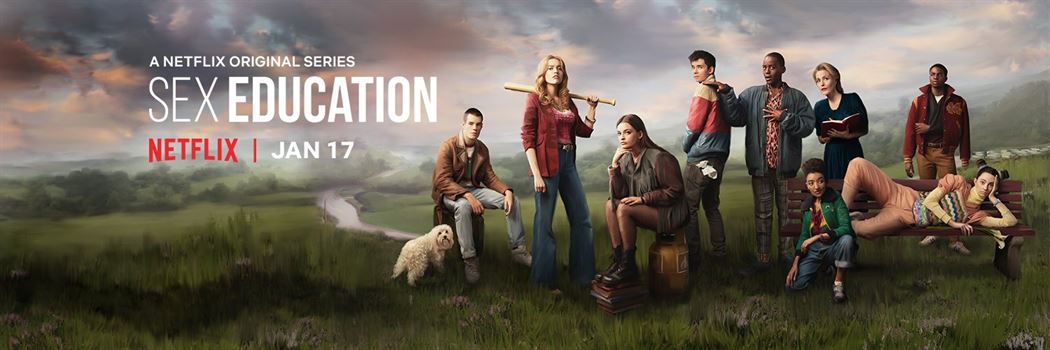Warning: The following review contains spoilers.
Last year in the entertainment-dead month of January, a new Netflix original silently made its way onto the streaming platform. What came from this new Netflix original series was a hilarious, honest and modern look at the lives of teenagers who are clueless when it comes to sex and many other day-to-day activities.
This one included noteworthy names like Gillian Anderson, better known as Scully from “The X-Files” and Asa Butterfield, formerly remembered as Bruno from “The Boy in the Striped Pajamas.”
While the first season merely flirted with messages concerning sexuality, race, consent and inclusivity, it still felt like a typical coming-of-age show. However, the second season focuses on making “Sex Education” a show for people of all sizes, races and sexualities; the inclusive storylines go against the lapping waves of coming-of-age stereotypes.
In being ultimately forced out of school and left to forfeit her feelings for Otis (Asa Butterfield), viewers easily sympathize with Maeve (Emma Mckay). Despite the blooming relationship between Otis and the new girl Ola, played by Patricia Allison, it seemed the show was beginning to abandon the relationship between the two and side with Maeve instead.
This is a trend very atypical in most teen shows: a white protagonist developing feelings for both a black and white character and ending up with the black character instead. But, not before dumping her/him and getting together with the white character once more.
Thankfully “Sex Education” is not a typical teen show. Instead, what we get is a storyline where Otis winds up with no one, due to his incompetence as an ignorant male. Ola also breaks off the relationship due to the discovery of her pansexuality.
This comes as a welcome surprise since not only does Ola Nyman develop the same respect as the show’s protagonist, but she goes through a season-long arc of growth and becomes an non-disposable character who many young viewers can look up to. Ola is one of few pansexual characters to exist in mainstream media and stand out as someone who is portrayed in a positive light in terms of her sexuality. Ola is never demonized over it or made to feel as an outsider because of it.
By allowing so many characters, old and new, to choose their place on the sexuality spectrum, the show is making strides away from the atypical heteronormative story it had set up in the previous season. Florence (Mirren Mack) for example, is one of very few respectful representations of asexuality in television, let alone a teen show.
Florence’s coming to terms with her asexuality is one of the most memorable moments of the season with it being a relatively quiet and sincere conversation with Gillian Anderson’s character, Jean Millburn. In a visit to Ms. Millburn, Florence goes on about how she feels broken, with a dejected tone in her voice. Jean informs her that there was never anything wrong with her and explains what asexuality is in a simple manner, never judging or scolding her.
The second season of “Sex Education” sets the standard for what shows such as “Riverdale” fail to do. It grounds the characters and lets the real world mechanics operate, ensuring that the growth of the characters is earned and that it’s real. Adam Groff for example goes through a gradual transformation from heteronormative bully to kind-hearted, bisexual giant, while new character Viv Odensanya finds herself changing who she is for a boy before realizing her integrity and intellect are far more important than any boy could ever be.
The show is setting the standard, not just for teenage coming-of-age shows, but for all shows in the current media landscape. Its acceptance of diversity in race, sexuality and body positivity is something for the next generation of teens to look up to and to truly see themselves represented in a way a previous generation never could before.





